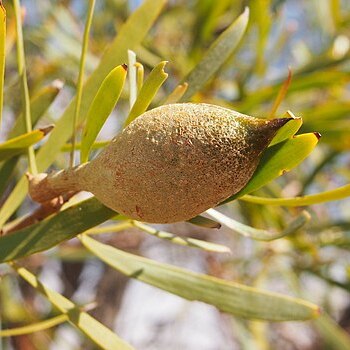A small tree. It grows 3-6 m high. The young shoots are silky. The leaves are stiff and narrow. They have fine hairs on both surfaces. The blade is 7-18 cm long by 0.5-1.3 cm wide. They are a dull grey-green. The flowers are very small and yellow. The are about 0.3 cm long. They occur in groups about 1.5 cm across. These are produced in the axils of leaves. The fruit are smooth and oval. They are woody with a thick wall. They are 4-5 cm long by 2-2.5 cm wide. They are light brown and split open when ripe.


